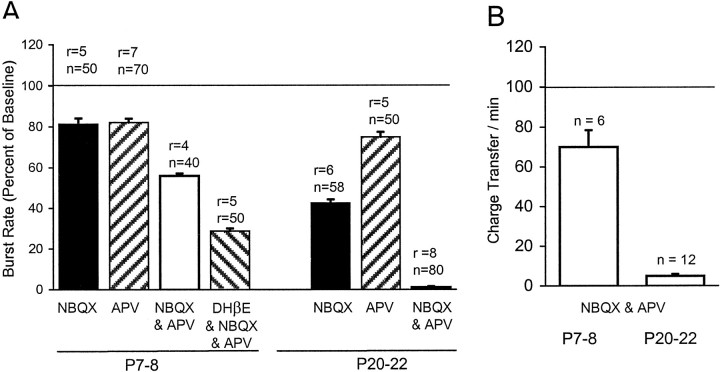Fig. 6.
Quantitative summary of the effects of ionotropic glutamatergic blockade on spontaneous bursting activity at P7–P8 and P20–P22. A, From calcium recordings, burst rates in the presence of various antagonists are expressed as a percentage of the rate under control conditions (Ringer's solution) preceding the bath application of the antagonists. Drug concentrations applied were 10 μm (NBQX) , 100 μm (d-APV), and 100 μm (DHβE). All effects were significant (Mann–Whitney test, p < 0.001;r = number of recordings; n = number of cells monitored). B, From voltage-clamp recordings, the charge transfer per minute in the presence of NBQX (10 μm) and d-APV (100 μm) is expressed as the percentage of the charge transfer per minute in Ringer's solution preceding the bath application of the antagonists. The antagonists decreased the charge transfer per minute somewhat for cells from P7 to P8 (n = 6;p = 0.0640, Student's t test, paired two-tail), whereas they eliminated nearly all charge transfer for cells from P20 to P24 (n = 12;p = 0.0002, Student's t test, paired two-tail).

